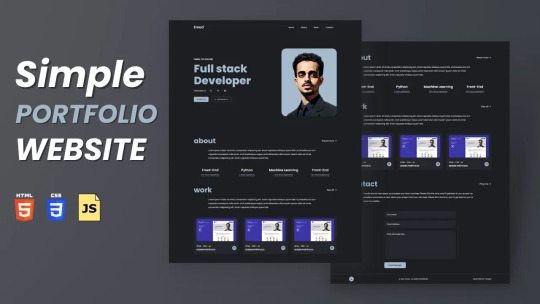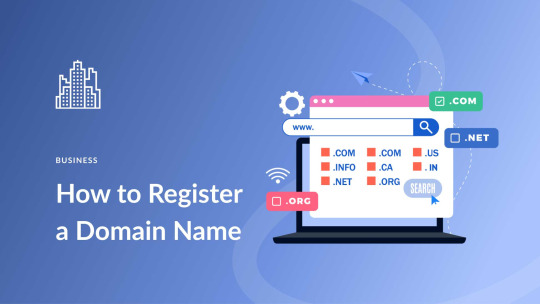#PortfolioInspiration
Explore tagged Tumblr posts
Text

Step into the world of Avondale Lane with Ashley Winn Design's incredible portfolio. Get inspired by their stylish and modern creations.
0 notes
Text
bookbinding inspiration
some bookbinding inspiration from G+C studio class today








*good idea of using bookbinding techniques for portfolio presentation
24 notes
·
View notes
Text
Graphic Design Portfolio websites: Top 5 Elements Every Successful
Discover why responsive design is crucial for Graphic Design Portfolio websites. Seamlessly adapt to any device, ensuring a smooth shopping experience for your customers.
Introduction:
Graphic design portfolio websites serve as a digital showcase for designers to display their work and attract potential clients or employers. These websites are essential for showcasing a designer’s skills, creativity, and style in a visually appealing and organized manner. By curating a portfolio website, designers can effectively communicate their expertise and experience to a wider audience, making it easier for them to stand out in a competitive industry.

Clean and User-Friendly Layout, Graphic Design Portfolio Websites:

Graphic design portfolio websites with a clean and user-friendly layout offer a visually appealing and easy-to-navigate platform for showcasing creative work. These websites prioritize simplicity and organization, ensuring that visitors can effortlessly browse through various projects and get a clear understanding of the designer’s skills and style. By incorporating a clean design aesthetic and intuitive user interface, these portfolio websites enhance the overall user experience, allowing potential clients or employers to focus on the artwork and design expertise rather than getting lost in a cluttered or confusing interface.
The user-friendly interface enhances the overall user experience, making it more enjoyable for potential clients or employers to explore the work showcased in the portfolio.
High-Quality Visuals:

Portfolio websites for graphic design that showcase high-quality visuals are essential for professionals in the field. These websites serve as a digital representation of a designer’s work and expertise, allowing them to display their skills and creativity to potential clients or employers. By incorporating visually stunning elements, such as eye-catching images, sleek layouts, and engaging animations, these portfolio websites can captivate visitors and leave a lasting impression.
When it comes to graphic design portfolio websites, the emphasis is on presenting high-quality visuals that truly stand out. These websites act as a virtual gallery, enabling graphic designers to exhibit their best work in a visually appealing and organized manner. By carefully curating their portfolio, designers can showcase their versatility, expertise, and unique style to attract potential clients or employers.
Clear Call-to-Actions:

Portfolio websites with well-defined call-to-actions are essential for guiding visitors towards desired actions, such as contacting the designer, viewing more projects, or making a purchase. Clear call-to-actions help users navigate the website easily and understand what steps they should take next. By strategically placing buttons or links with concise and compelling messaging, designers can effectively lead visitors through the portfolio and encourage them to engage further with the content.
A thoughtfully designed portfolio website not only showcases the designer’s work but also serves as a platform for potential clients to connect and interact with the designer.
Testimonials and Client Work:

The graphic design portfolio websites showcase a collection of testimonials and client work. These websites serve as a platform for designers to display their skills and expertise through real-life projects they have completed for various clients. Testimonials from satisfied clients provide credibility and showcase the designer’s ability to meet and exceed expectations. By including client work in the portfolio, potential clients can get a glimpse of the designer’s style, creativity, and versatility in different design projects.
The testimonials and client work featured in the graphic design portfolio websites play a crucial role in attracting new clients and building trust with potential customers.
Contact Information and Social Media Links:

Graphic Design Portfolio websites provide a platform for designers to showcase their work and connect with potential clients. These websites typically include contact information and social media links to make it easier for visitors to get in touch with the designer. The contact information may include an email address, phone number, or a contact form that allows visitors to send a message directly to the designer. This ensures that anyone interested in hiring the designer or collaborating with them can easily reach out and discuss their requirements.
In addition to contact information, Graphic Design Portfolio websites also incorporate social media links to enhance the designer’s online presence. These links may direct visitors to the designer’s profiles on platforms such as Instagram, Behance, Dribbble, or LinkedIn. By including these links, designers can showcase their work to a wider audience and engage with potential clients or fellow designers.
Conclusion:

Graphic design portfolio websites play a crucial role in showcasing the talent and skills of graphic designers. These websites serve as a virtual gallery where designers can display their best work, allowing potential clients or employers to get a glimpse of their capabilities. A well-designed portfolio website not only exhibits the designer’s creativity but also demonstrates their ability to effectively communicate ideas through visual elements.
Visit: https://chennaiwebsitedesigner.in/
#CreativePortfolios#CreativeWebsites#DesignInspiration#DesignInspo#DesignPortfolio#DesignShowcase#DesignTrends#DesignWebsites#DigitalPortfolio#GraphicDesigners#GraphicDesignInspiration#GraphicDesignPortfolio#OnlinePortfolio#PortfolioInspiration#PortfolioShowcase#PortfolioWebsite#VisualDesign#VisualInspiration#webdesigners#webdesigninspiration
1 note
·
View note
Text
Building an Effective Portfolio Websites:

Step 1: Define Your Objectives and Audience
Clearly define the purpose of your portfolio websites. Are you aiming to attract clients, land a job, or simply showcase your work?
Identify your target audience. Tailor your portfolio content and design to appeal to potential clients, employers, or industry peers.
Step 2: Choose the Right Platform For Portfolio Websites

Consider using website builders like WordPress, Squarespace, Wix, or portfolio-specific platforms like Behance or Dribbble.
Evaluate each platform based on factors like customization options, ease of use, pricing, and the specific needs of your portfolio.
Step 3: Select a Domain Name and Hosting
Choose a domain name that is professional, easy to remember, and ideally reflects your name or brand.
Select a reliable hosting provider that offers good uptime, speed, and customer support.

Step 4: Plan Your Website Structure
Design a clear and intuitive navigation menu that guides visitors through your portfolio websites.
Organize your work into categories or sections such as projects, About Me, Services, Testimonials, and Contact.

Step 5: Design a Visually Appealing Layout
Select a clean and professional design that highlights your work without distracting from it.
Pay attention to typography, color scheme, and overall aesthetics to create a visually cohesive experience.
Ensure your website design is responsive and looks good on various devices and screen sizes.
Step 6: Showcase Your Best Work
Select a curated selection of your top projects or achievements to feature prominently on your portfolio website.
Provide detailed descriptions, images, videos, and any relevant links for each project to give visitors a comprehensive view of your work.
Consider including case studies or project breakdowns to showcase your process and problem-solving skills.
Step 7: Craft Compelling Content
Write an engaging About Me page that tells your story, highlights your skills, and showcases your personality.
Use clear and concise language throughout your portfolio, focusing on the benefits and outcomes of your work.
Incorporate client testimonials or endorsements to build credibility and trust with potential clients or employers.
Step 8: Optimize for Search Engines (SEO)
Conduct keyword research related to your industry and include relevant keywords in your content, headings, and metadata.
Optimize your images with descriptive alt text and ensure your website structure is crawlable by search engines.
Submit your sitemap to search engines like Google to improve your site's visibility.

Step 9: Make it Easy to Contact You
Include a dedicated contact page with multiple ways for visitors to reach out to you, such as a contact form, email address, and social media links.
Make sure your contact information is easy to find and accessible from every page of your portfolio websites.
Step 10: Test, Launch, and Promote
Test your website thoroughly on different devices and browsers to ensure it functions properly.
Once you're satisfied, launch your portfolio website and promote it through your professional network, social media channels, and relevant online communities.
Monitor your website's performance using analytics tools and make necessary adjustments to improve its effectiveness over time.
Step 11: Maintain and Update Regularly
Regularly update your portfolio with new projects, skills, and achievements to keep it current and relevant.
Stay engaged with your audience by responding to inquiries promptly and actively promoting your portfolio websites through various channels.
By following these steps and putting effort into each aspect of your portfolio websites, you can create a standout online presence that effectively showcases your skills, accomplishments, and unique value proposition to potential clients or employers.
FAQ?
What are the key elements of an effective portfolio website?
Clear Navigation
High-Quality Content
About Me Section
Portfolio Section
Contact Information
Testimonials or Reviews
Responsive Design
Visual Appeal
Call to Action (CTA)
Blog or Insights Section (Optional)
SEO Optimization
Update Regularly
Visit: https://chennaiwebsitedesigner.in/
#EffectivePortfolio#PortfolioBuilding#PortfolioBuildingTips#PortfolioDesign#PortfolioInspiration#PortfolioTips#PortfolioWebsiteDesign#PortfolioWebsites#PortfolioWebsiteTips#WebDesignGuide#webdesignportfolio#WebDesignTips#WebDesignTutorial#WebDevelopmentGuide#WebDevelopmentTutorial#WebsiteDesignGuide#WebsiteDesignTutorial#WebsiteDevelopment#WebsitePortfolio
0 notes